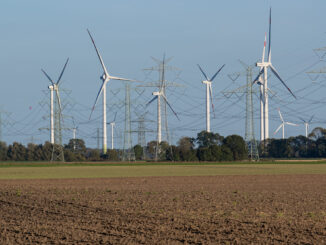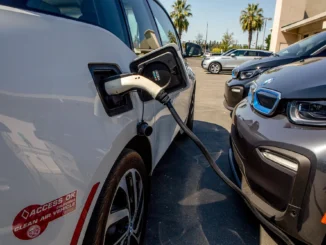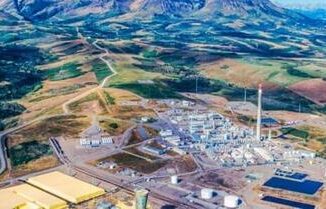
“Crypto mining has been described as running your car in neutral all day so it can solve crossword puzzles in exchange for an occasional coupon that’s mostly useful for buying heroin online.” – Vice
In the good old days of 2021, the price of Bitcoin reached $60,000 apiece, and the frenzy to ‘mine’ coins was palpable. If you’ve managed to successfully expunge the mania from the space between your ears, recall that crypto mining “requires three basic things: servers to solve complex mathematical problems, a way to keep those servers cool, and huge amounts of electricity.”
The Vice article hilariously documented what was purported to be Europe’s weirdest crypto mining site, a section of North Kosovo that was paradise for miners because, due to governmental infighting, local governance simply ceased to function. Police were around, but not enforcing rules, and people simply stopped paying their utility/electricity bills. Thus was created the world’s biggest welcome mat for crypto mining – free power, no harassment over noise, no one complaining about an environmental footprint.
The point of recanting these tales is not to get into crypto debates, but to summon forth from history the lesson in what happens when an ‘industry’ appears out of nowhere, requires vast amounts of energy, can be located anywhere, and is growing rapidly.
Two years ago, that title went to crypto mining. In 2023, it’s all about AI. And it’s going to get much bigger.
Bitcoin mining as an industry never went mainstream; we did not see Fortune 500 companies setting up mining operations to cash in (even if they tacitly supported Bitcoin). AI is something else entirely.
AI shares a similar profile, in a few ways, with Bitcoin mining. First, it requires monstrous amounts of energy. As discussed last week, Tesla’s Dojo AI computer, once fully up to planned maximum size, will consume as much power as 165,000 homes.
Second, it is growing rapidly. Almost every industry is pursuing AI advantages. Medicine, agriculture, automotive, you name it, all sorts of industries are or will be using AI.
Third, AI data centres can be located anywhere. This is a key aspect that is going to overwhelm energy planning like a tsunami.
The link to global energy flows should not be underestimated. AI data centers and server farms will be created and used by countless organizations and companies around the world. As discussed last week, Lyn Alden speculated quite rationally that hackers might find AI to be a godsend; breaking into computer systems around the world seems like a supremely fitting function for AI which will use machine learning and massive databases to scan for weaknesses (for example, a miscreant with enough computer power might be able to comb your Facebook or other social media account, cross reference it with all references you make to holidays/where you live/dine, what you do for hobbies, etc., and come up with much better algorithms for cracking passwords).
We should therefore expect to see a similar energy-gold-rush, where AI power-hungry data centers seek out a location – any location – that can provide cheap, reliable power.
Which brings us back to the dream-site first discussed above, North Kosovo, which was perfect because power was cheap and scrutiny non-existent. Why would we assume AI would be any different? In other words, California might fret at allowing construction of hundreds of massive AI computers because their fragile grid cannot handle it. In many other parts of the world, it will work the other way around – their fragile (or non-existent) grids might suddenly grow massively to take advantage of a global demand for AI power.
Take for example a small, impoverished developing country that may have access to abundant coal, oil, or natural gas. Current western pressure is limiting the ability of these nations to develop hydrocarbon resources because of the war on ‘climate change’ – for example, Europeans and North Americans are joining arms to oppose projects like the East African Oil Pipeline.
So what is to stop a small impoverished nation that perhaps doesn’t feel all that inclined to help London or Brussels or Washington or Ottawa with their emissions battles? What is to stop them from utilizing any available hydrocarbon resources directly to attract global data centers and servers?
What happens to power demand then? What happens to emissions then? And who will stop it? Or, before the west tries to answer that question for non-degreed class, who has a right to stop it?
Two great big tectonic plates are moving that provide some indication of how things are going to happen in coming years.
One is the rise of BRICS, the affiliation of nations that wants to create its own trading block in order to steer a path that Washington or Belgium might not prioritize. BRICS – Brazil, Russia, India, China, and South Africa – recently welcomed six new member countries: Argentina, Egypt, Ethiopia, Iran, Saudi Arabia, and the United Arab Emirates.
The new expanded BRICS (possibly to be called BRICSAEEISAUAE but probably not) is an entity of considerable clout. Brazil, Russia, Saudi Arabia, Iran, and UAE are major exporters of various industrial materials the world can’t live without, including oil, natural gas, metals, minerals, etc. India and China alone provide a monstrous market with 2.5 billion people between them. Developing countries/economies like Ethiopia, Argentina and Egypt bring a lot to the table as well in terms of natural resources and, perhaps more critically, space and people and lower industrial cost structures than the west. China largely controls the ability to turn raw materials into processed metals and minerals.
The only thing this group really seems to be missing is a pontificating Euro or American voice telling them what to do, how to do it, and when to do it. I suspect that absence is not a coincidence.
The second big tectonic shift was on full display at the recent G20 summit. The African Union was admitted as a member, which was kind of a big deal, particularly for Africa, but also for the world in general. The addition acknowledges that other voices need to be on the world stage, a sense of humility the G7 has long lacked. The final communique issued at the end of the G20 summit included doses of common sense lacking from typical utterances of the G7: “We affirm that no country should have to choose between fighting poverty and fighting for the planet…It is also critical to account for the short, medium, and long term impact of both the physical impact of climate change and transition policies, including on growth, inflation, and unemployment.”
Contrast that with the west’s bizarre self-lobotomization when it comes to energy, as best personified by the entity furthest along the rapid-transition path, Germany: the dwindling economic powerhouse is chained to a green freight train it insists is under control, has shut down nuclear power plants with no low-emissions baseload to replace it, and in a final stunning swan dive to the pavement, is orchestrating the installation of 500,000 heat pumps per year to the grid, which will be in most demand in cold weather and will perform worst in cold weather, and will add a potential 10 gigawatts of cold-weather demand at the very instant the grid is least able to afford it, and for which there is no supply available anyway. A German energy economic university think tank says the additional cold-weather demand could only be met by new gas-fired power plants, which are not being built. In sum: Germany has shuttered its cleanest, most reliable energy; it has or is trying to banish hydrocarbons and replace them with intermittent power; and finally is hastening adoption of devices that will function very well in 80 percent of conditions when it doesn’t matter much but will fail in a spectacularly deadly way at the point in time when they are needed the very most, because heat pumps will be turned up to 11 at the very time the grid will be the most taxed. German engineering isn’t what it used to be.
Now put those two things together: the rise of BRICS as a formidable global alliance, and the rise of developing nations in the stature of the G20 in a manner that clearly indicates they have a set of priorities that do not align with the west, and they don’t really care. Contrast the recent G20 communique (“We affirm that no country should have to choose between fighting poverty and fighting for the planet”) with the climatic musings from most recent G7 meeting in May, the western ruling class, putting out a bucket of gibberish chock full of climate change platitudes and wishful thinking (verbatim: “We task the Finance Ministers to turn their “High-level Policy Guidance for Public Finance Tools to Build Resilient Supply Chains in the Era of Decarbonization” into specific actions by developing the “Partnership for RISE (Resilient and Inclusive Supply-chain Enhancement)” in collaboration with interested partners and international organizations, especially the World Bank Group.” The whole document is a blueprint for G7 governments and finance ministers to imprint their hair-shirt goals on the developing world. The fact that the G20 statement came only a few months after the G7 statement tells us all we need to know about what the G20-G7=G13 think of western elite scheming.)
Put this all together. The world’s appetite for AI is going to proceed, in all likelihood, at breakneck speed, with a corresponding power appetite to match. To the extent that AI processing can be erected quickly, we are going to see AI data server farms pop up wherever there is reliable power, no matter the energy source, much like Bitcoin mining did at peak frenzy.
Energy demand is going to skyrocket, and the world’s AI machinery will come to life in whatever corner of the world that stands ready with an industrial site and a reliable power source. While energy transition development happens at warp speed, the world appears set to increase total energy demand in lockstep.
The general public’s attitude is already teetering from the daily contradictions they must live as functioning members of modern society that consume ever larger quantities of energy, while simultaneously suffocating on climate change news. Just wait til they have to choke down this bolus as well.
ENB Top News
ENB
Energy Dashboard
ENB Podcast
ENB Substack



